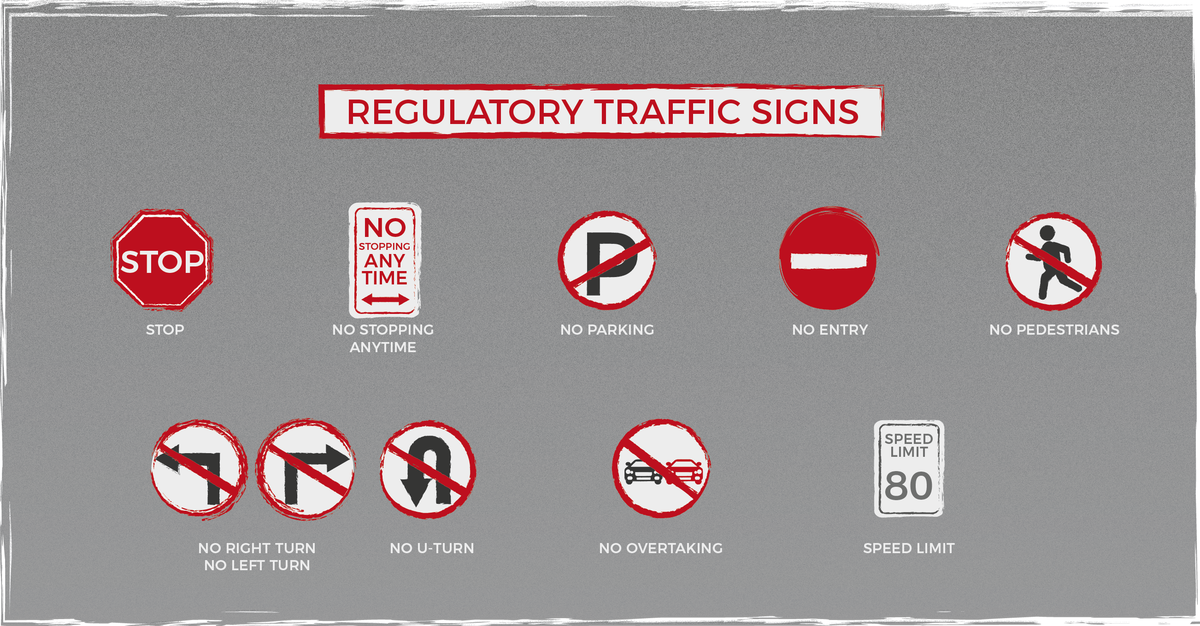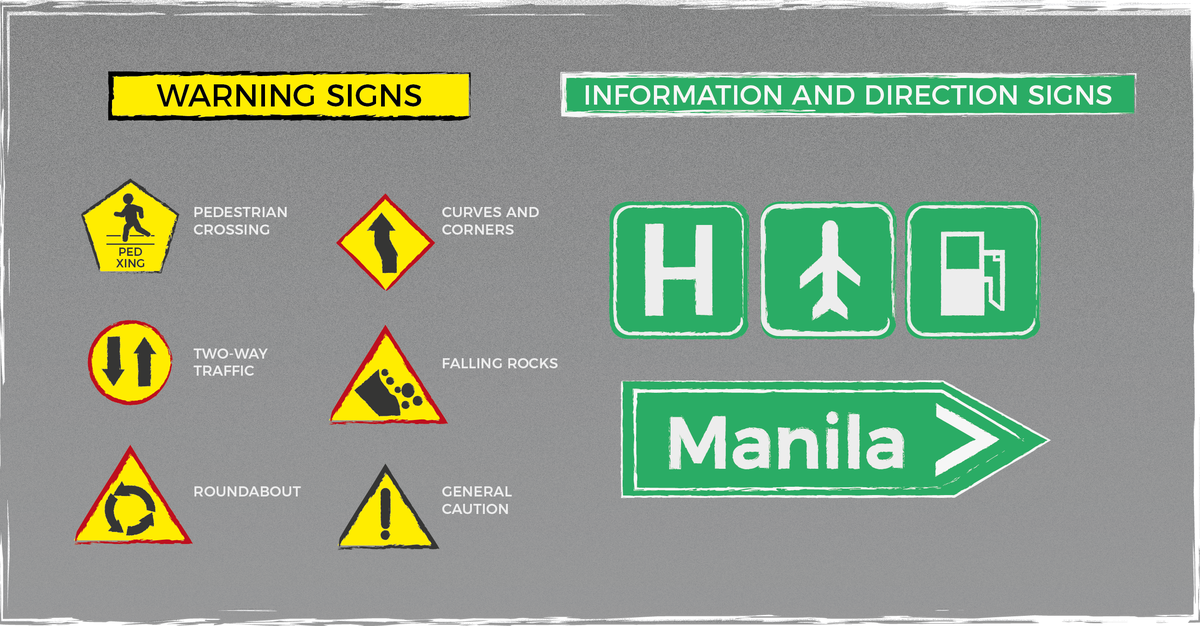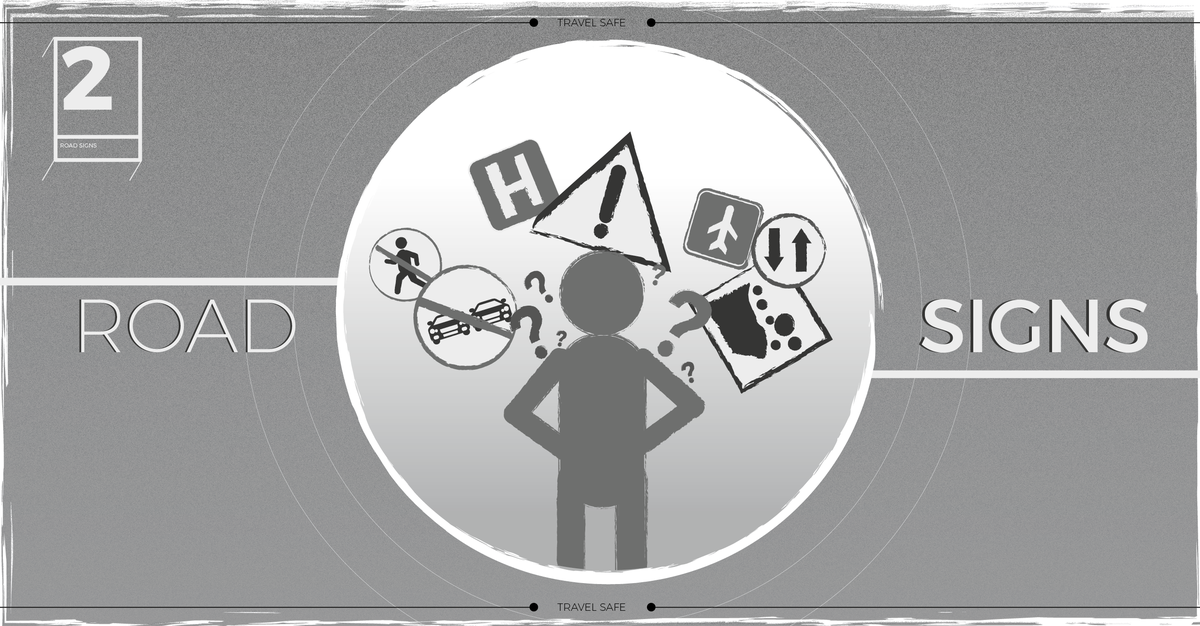Road signs are what keeps order in quiet rural to the busiest thoroughfares, even without traffic lights or enforcers in sight. Getting familiar with these pointers does a lot to make roads safe for everyone in this ecosystem, particularly one as wild as Metro Manila. Whether you’re new to the driving world, a seasoned driver or a pedestrian, make a mental note of these indicators and save someone a headache.
Colors conventionally indicate what a road sign is. Universally, white and red are designated to regulatory signs, yellow and sometimes red for warning signs, while either green or blue are assigned to directional information. There are far more colors used to guide our way, but for this month, let’s stick to the basics.
REGULATORY SIGNS
These are symbols indicating what is permitted and prohibited on the road.

- Stop – Often seen at intersections, school crossings among others, this sign intructs drivers to halt.
- No Stopping Anytime – Indicates the driver cannot stop for any reason, whatsoever.
- No Parking – Specifies that parking is prohibited in a certain area. Illegally parked vehicles might be towed.
- No Entry – Mostly used for one-way traffic, this sign can also denote non-admittance to a section without permission.
- No Pedestrians – Simply means pedestrians are not allowed on the road.
- No Right, Left or U-Turn – Indicates prohibited turns, usually at junctions and crossroads.
- No Overtaking – Means pulling ahead of other vehicles is not allowed.
- Speed Limit – A particular speed is to be maintained in the area.
WARNING SIGNS
These symbols denote an obstacle or road condition is up ahead, notifying motorists and pedestrians of potential hazard if not careful.
- Pedestrian Crossing – A marked area on the road designated for pedestrians to cross is coming the motorists’ way. Sign signals drivers to reduce speed or pause.
- Two-Way Traffic – Indicates that the part of the road drivers are about to take allows traveling in both directions.
- Roundabout – Sign indicating the driver is approaching a circular intersection and should take caution.
- Curves and Corners – Indicates that there might be an unexpected sharp or continuous bend ahead, suggesting drivers to reduce speed.
- Falling Rocks – Denoting the driver is approaching an area prone to landslides and falling rocks, also cautions that there may be debris on the road.
- General Caution – Exclamation point used to signify a particular hazard or obstacle present must be avoided.

INFORMATION AND DIRECTION SIGNS
These road signs are used to give information on the driver’s current location, distance and way to the next city, which lane to take for traveling to destinations such as airports, stops for public utility vehicles, as well as parking areas. This category also includes the distance to the nearest gas stations, hospitals, and even landmarks.
Paying attention to road signs, knowing what they mean, and abiding by them allows us to harmoniously coexist on the road, eventually making travels smoother and preventing road accidents. Be aware, spread the word, and Travel Safe!
